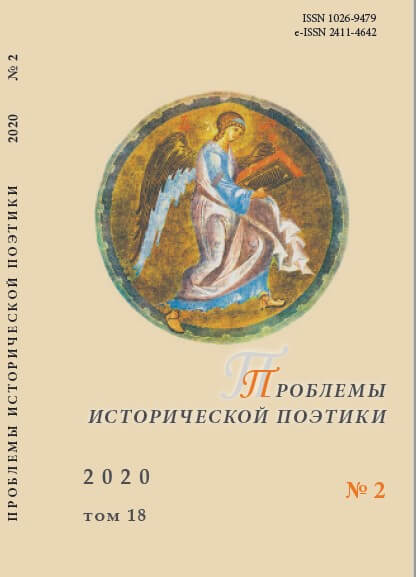Категория соборности в рассказе И. А. Бунина «Антоновские яблоки»
The Category of Sobornost’ in Ivan Bunin’s Story Antonov’s Apples
Author(s): Olga YurevaSubject(s): Russian Literature, Eastern Orthodoxy, Theory of Literature
Published by: Петрозаводский государственный университет
Keywords: Ivan Bunin; category of conciliarity; ethnopoetics; Orthodox code; national world; symbolism; sacred space;
Summary/Abstract: The article presents for the first time a complete analysis of the ethnopoetic features of the story Antonov’s apples by I. A. Bunin. The idea of sobornost’ (conciliarism) as a world-forming principle in the story correlates with the idea of unity. The conciliar consciousness reflected in Bunin’s works is based on the unity of the Orthodox faith, the everyday realities of the peasant and landowner world, and Russian nature. These areas of the Cathedral life contain basic national images-symbols and archetypes that define the features of the story’s ethno-poetics and characterize Bunin’s “cultural unconscious”. The Ethnopoetic images — symbols of the sky and the field determine the spatial characteristics of the chronotope, structured by the idea of a Cathedral synthesis of the soul’s being and the natural world, in which the life of a Russian person was so organically included. Bunin depicts his idea of the Russian national world as a conciliar existence organized according to special, Divine principles and laws. The density and saturation of the chronotope of the story is determined by spatial, picturesque, phonic and olfactory images. The image of the unity of the national world is based on Bunin’s historiosophical idea of the unity of life and soul of the Russian people, both noblemen and peasants. This idea is implemented in the story at the level of the image system and compositional structure.
Journal: Проблемы исторической поэтики
- Issue Year: 18/2020
- Issue No: 2
- Page Range: 271-297
- Page Count: 27
- Language: Russian

